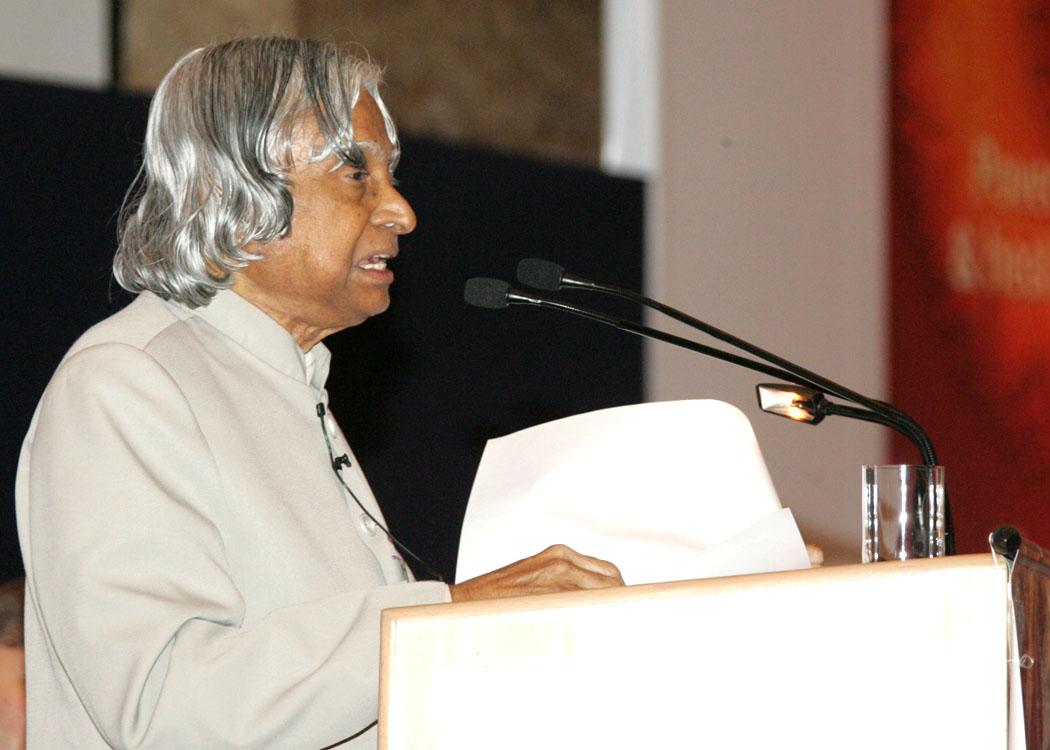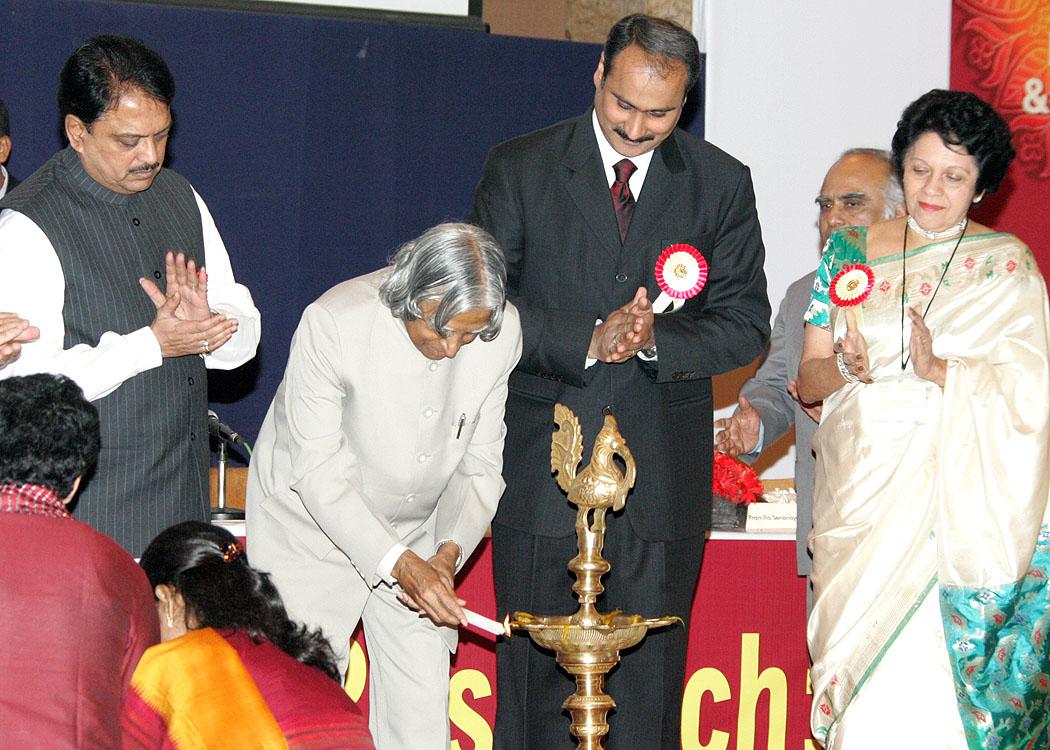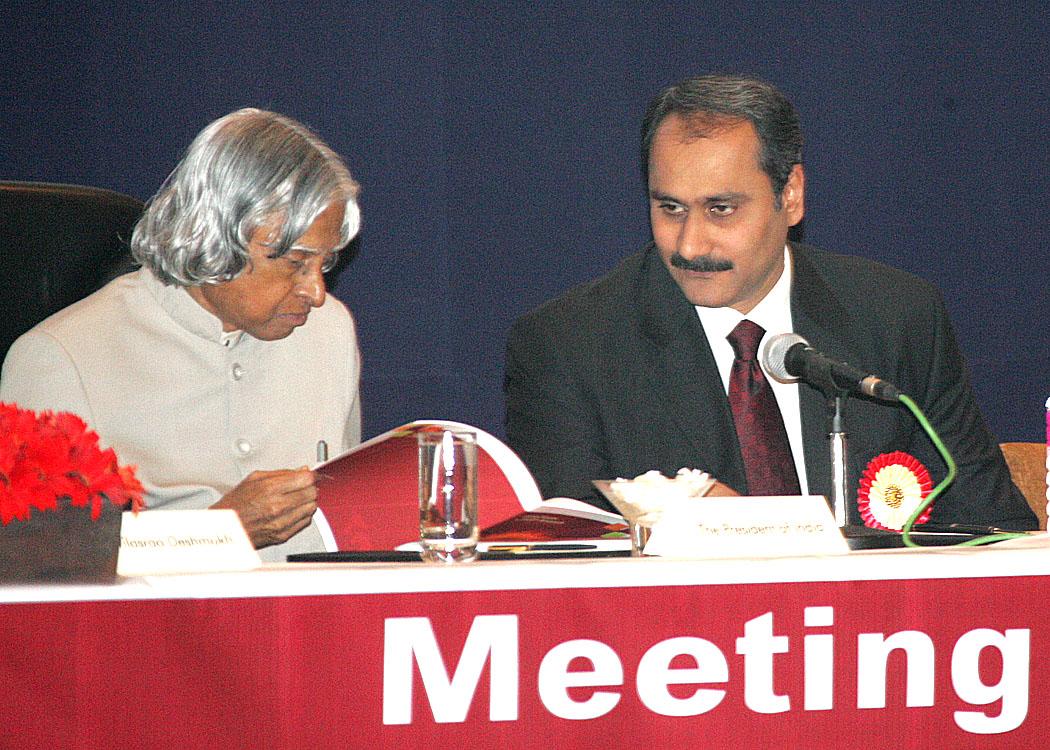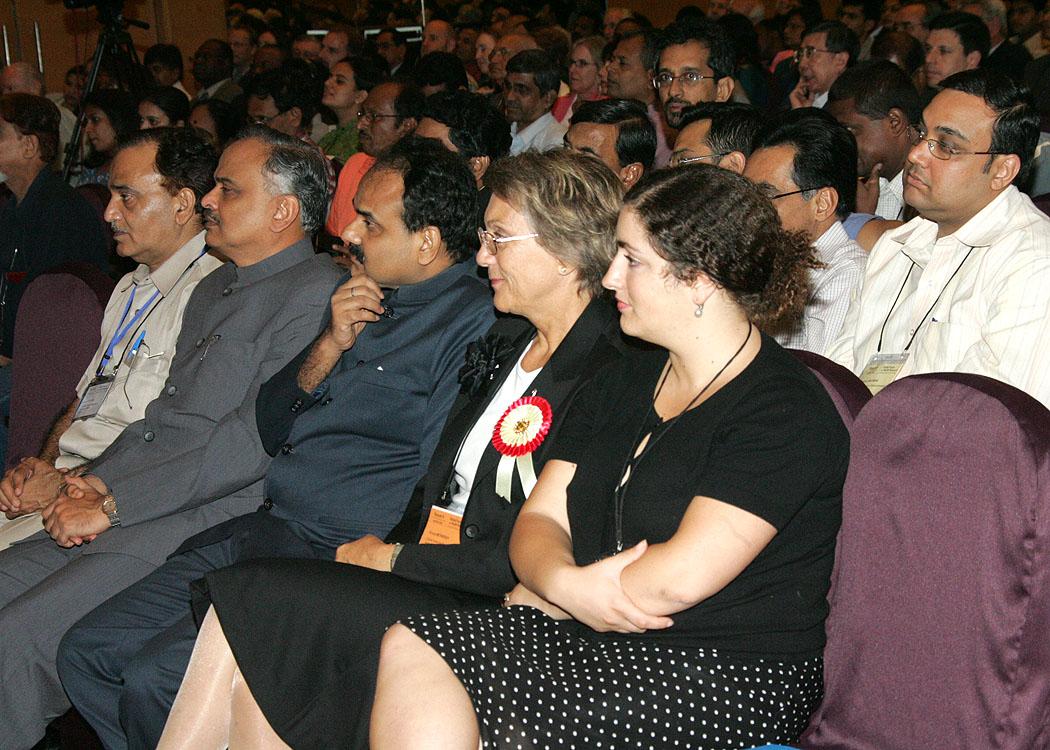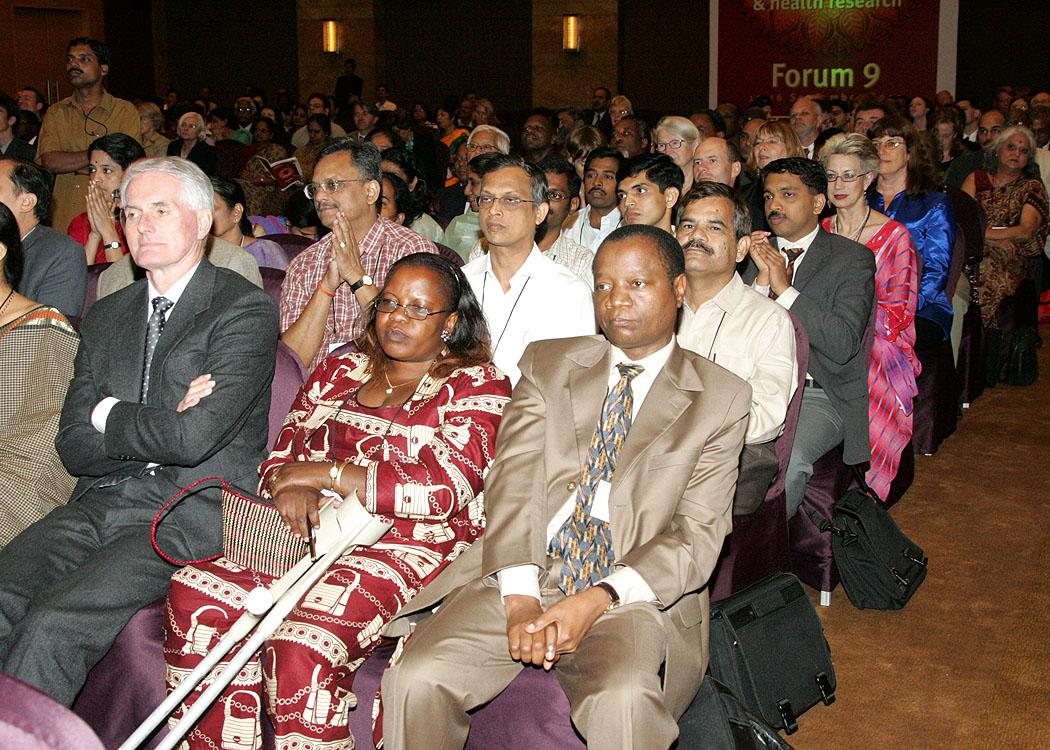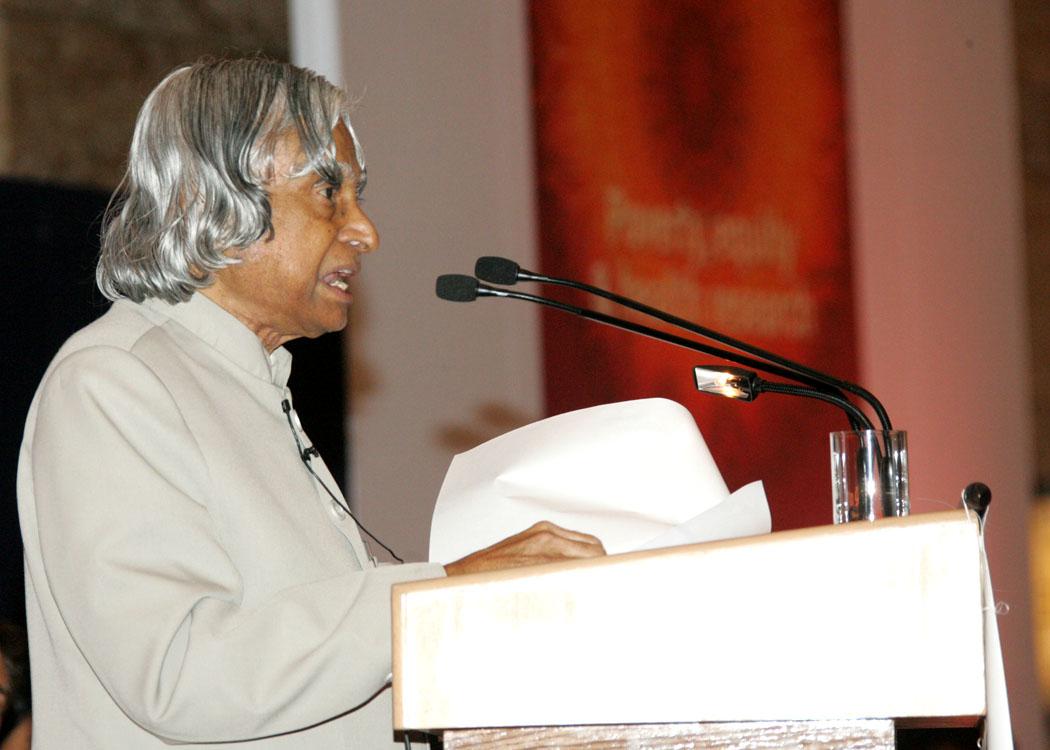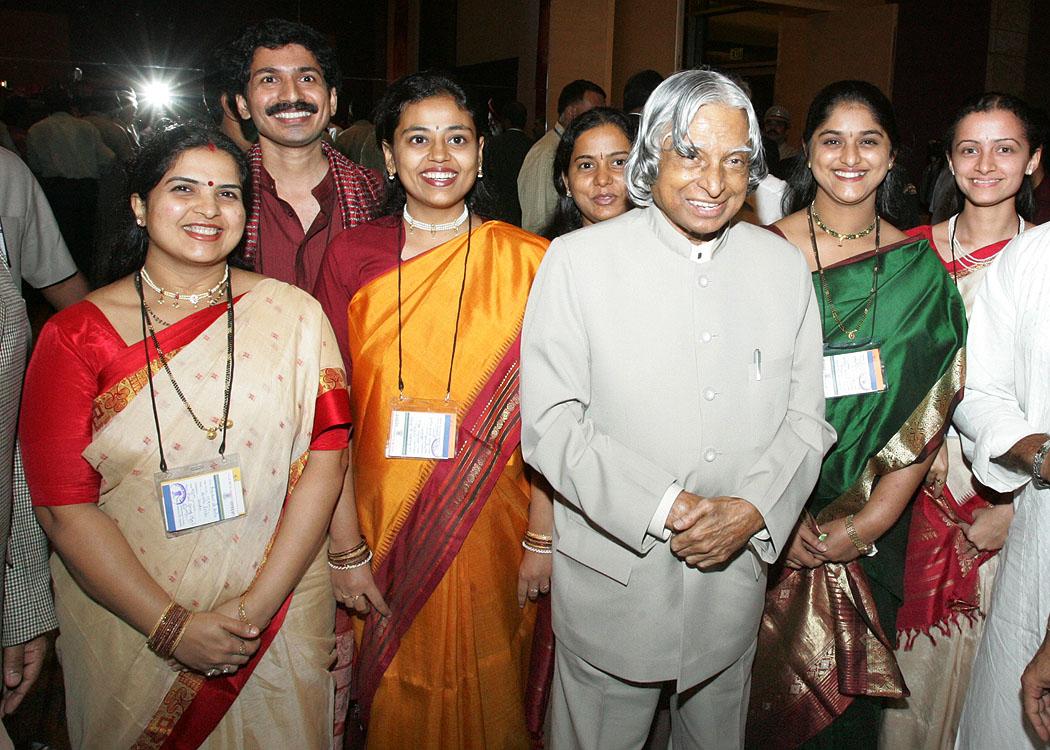Address At The 9Th Annual Meeting (Forum-9) Of Global Forum For Health Research, Mumbai
Mumbai : 12-09-2005
The Research Challenges of Healthcare
I am delighted to participate in the inauguration of the Forum-9 meeting of the Global Forum for Health Research. I am happy to note that the Global Forum is working to change the priorities governing how existing resources for health research are used. The conduct of the 9th meeting of Forum in India provides an opportunity for a larger number of participants from India and adjoining countries to benefit from the deliberations of the meeting. I greet the members of Global Forum for Health Research and the Co-hosts, Ministry of Health & Family Welfare and the Indian Council of Medical Research. I would like to discuss on the topic "The Research Challenges of Healthcare".
Tradition of Research philosophy
Recently, I met Dr. Charles Cummings and his team, of the Johns Hopkins University Board and his team. I asked him, that was in my mind, to Dr Charles, "What made Johns Hopkins a world class medical research institution in addition to its cherishing societal missions?" His answer was, "it is due to a great tradition, and it started with a number of visionaries with value system, focused missions and the nature of working together. This tradition continues even now. Indeed it is a great message from Dr. Charles." I am sure, every R&D centre in the country have its unique culture that comes out of research tradition, leading to the results of the research reaching the people in the form of medicines or vaccines. I recall, in India our institution L.V. Prasad Eye Institute at Hyderabad has set a tradition of providing quality eye care particularly with social commitment of 1:1. 1:1 implies one free eye care service for every paid eye care service provided by the Institute. Also, they have a tradition of excellent research in Ophthalmology and spreading the mission to various parts of the country.
Molecule to Drug
I realize the research to realization of approved medical products takes nearly 7 to 10 years. That means: when India in an year invents say thousands of molecules, at least 10 to 20 should graduate into an approved medical product. But if it is realized within the country it will be very cost effective and also internal wealth generator. Recently, I have visited a number of public and private sector medical and pharmaceutical R&D centres. In every laboratory I was very happy to see a large number of scientists working in the frontier areas of Pharma sector, particularly in the private sector which provides them strengths to become globally competitive. During the visit, I was reminded of 10/90 phenomena with certain exceptions. Based on the recommendation of Global Forum for Health Research, our R&D institutions should take up development of vaccines for malaria, anti-vaccine for HIV, a robust drug for TB and other water borne diseases on highest priority. The great tradition India nurtured over many centuries must emerge again and multiple health research centres must flourish.
Scientific Medical Healthcare Management
When I read the 10/90 Report on Health Research 2003-04, certain thoughts came to my mind which I would like to share with you. Every country has a specific combination of sanitary conditions, nutrition, life style and disease pattern. Naturally, the research has to be nation specific and also in certain cases region specific so that we can provide an integrated solution to the prevention or cure of a particular disease and correct the 10/90 gap. In this connection I would like to talk to you about a strategy adopted in a beautiful hill region in India which I am fully familiar with.
On 19th October 2002, I participated in the launching of a Mobile Clinic and Research Centre in Uttaranchal. This effort was piloted by the Technology Information, Forecasting and Assessment Council [TIFAC], the Government of Uttaranchal, Birla Institute of Scientific Research and many other agencies. After thirty two months of its operation, I found this mobile clinic has been used in six districts of Uttaranchal and treated nearly 43,000 patients during this period. Among the patients treated, 48% belong to the below poverty line category. They have taken 9,600 ultra sound, 5,500 X-rays, 1700 ECGs and nearly 20,000 lab tests. The mobile clinic has documented the disease profile of the patients in the region (six districts) which falls into the following categories: acute peptic ulcer, anemia, anti-natal, chronic obstructive pulmonary diseases, hyper tension, pelvic inflammation, renal calculi, upper respiratory tract infection and worm infection. This type of analysis has been possible because of computerized system of clinic management introduced right in the beginning. Also, the mobile clinic has been used in regions which are normally inaccessible and where organized medical facility is not available. This, I consider as the best form of reaching the healthcare to the neediest people in the country. This is a low cost solution with committed healthcare personnel and institutions. The clinical data provided by this model will be applicable for many hill zones. This can be one method of correcting the 10/90 gap. I am sure there may be many mobile clinic ventures in different parts of the country run both by Government and non-governmental organizations. What is needed is the networking of these facilities and integrating the data for providing a definite direction to our healthcare research. Mobile clinic will also provide research input for certain diseases prevalent in the hill area and tribal region such as pulmonary edema and sickle cell. The mobile clinic model can be followed by many states in India and other countries to enable medical facilities reach the common man. Now I would like to discuss about health status of our country (India) and specific measures needed for bridging the 10/90 gap in healthcare research.
Health status of India
India has made considerable progress in its health status since its Independence and particularly during the last fifteen years. At the time of Independence, the life expectancy of an Indian was less than thirty years. Between 1991-2005, the life expectancy of Indians has gone up from 58 to 64.35 years, infant mortality has come down from 87 to 60 deaths per 1000 live births and population growth rate has decreased from 1.9% to 1.4%. Still infant mortality is very high. We have to bring it to the level which has been achieved by Kerala. Let us look at some of the statistics. This data pertains to 1998 and 2003.
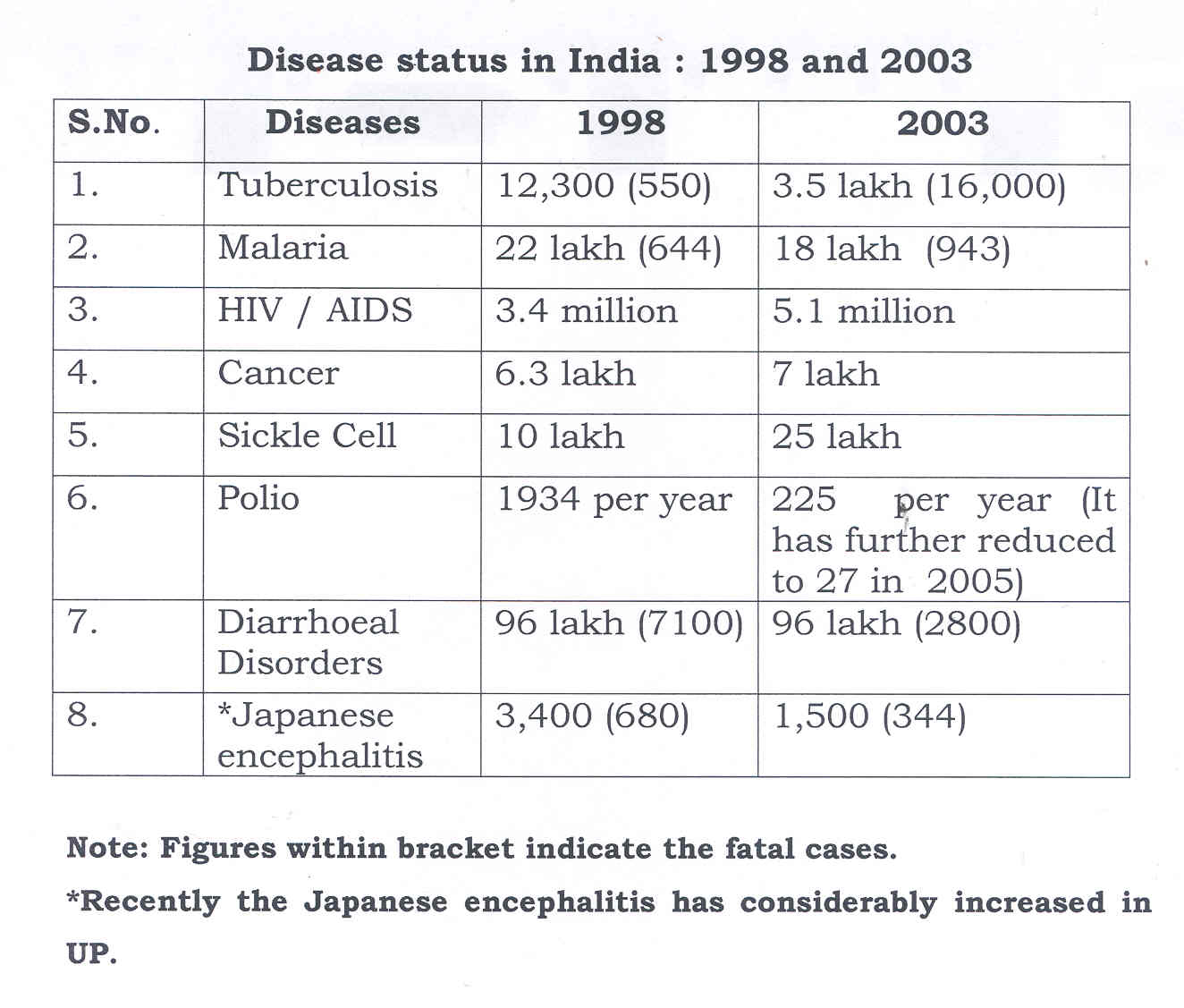
We should never be defeated by any problems. We should become master of the situation and defeat the problems. I consider these two Thirukkurals characterize the indomitable spirit.
Now I would like to talk about the training programmes for the Jawans and the families.
I would like to briefly talk to you on some of the diseases and actions proposed. Our experiences will definitely be shared with the third world developing nations in order to provide healthcare for all.
Tuberculosis
There is an effort to bring the entire country under the Revised National Tuberculosis Control Programme (RNTCP). So far, 93% of our country has been brought under this programme and by October the entire country will become part of this programme. This will ensure that at least 75% of the total Tuberculosis cases are detected every year and brought under direct surveillance. The treating agency must ensure that at least 80% success in fully curing the disease is achieved within the year. If this regime is followed continuously for over ten years our tuberculosis load will come down to less than ten per one lakh of population. For achieving this it is also essential to work faster on the development and clearance of new drugs which are in the pipeline.
Drug for faster cure of tuberculosis
Modern medicine has always relied on newer scientific inventions. Many of the world inventions have been used by Indian Healthcare Systems, effectively. India has also made significant contributions in developing drugs that are critically required for India. One of the achievements comes from a laboratory of the Council of Scientific and Industrial Research (CSIR). CSIR lab has developed a new therapeutic molecule for Tuberculosis. This molecule has shown the potential to cure TB in around 2 months, as against the standard treatment of 6 to 8 months. This breakthrough is very important. After completing the pre-clinical studies, the molecule transformed into a drug called Sudo-terb is scheduled to undergo clinical trials in humans. This development has been done as a public-private partnership involving the Lupin, the three CSIR Laboratories, namely, Central Drug Research Institute, Indian Institute of Chemical Technology and National Chemical Laboratory, and the University of Hyderabad. It is hoped that the drug will be in the market soon after the clinical trials. In addition to the above, there is also a need to develop a more effective vaccine against tuberculosis. The combined action of surveillance, detection and disciplined treatment have to work together to ensure faster cure of existing cases. Prevention of future cases has to be achieved through R & D efforts of developing new breed of vaccine and medicines. The collaborative action is needed between healthcare personnel, doctors, researchers and the pharmaceutical companies both in the private and public sectors to accomplish this mission.
Malaria
Incidence of Malaria has reduced from 22 lakh to 18 lakh in the period 1998-2003. However, the death cases has increased from 644 to 943. I understand that the conventional medicine used for treatment of Malaria namely Chloroquin has become resistant to Falciparum which causes cerebral Malaria. Our scientific community has developed and produced a drug named Arteether from Artemisinin which has been found to be an effective cure for cerebral Malaria. I understand that this drug is being exported to over forty countries. Also, Ranbaxy has acquired a malarial drug molecule and they are progressing towards clinical trials. The fully developed drug will be available in the market soon. This will be another important milestone in the treatment of Malaria.
Over the years I find that in spite of our efforts there is no rapid reduction in the occurrence of Malaria cases in the country. While taking up new projects it is essential to have multi-faceted inter-sectoral collaboration between various partners so that the impact assessment of the project on new type of diseases can be foreseen and suitable preventive action taken to contain the disease. In addition to this we have to improve the surveillance, develop rapid diagnostic kit and use the conventional prevention methods of spraying to control the vector. International Centre for Genetic Engineering and Bio-technology in collaboration with Bharat Bio-tech has developed a vaccine for Malaria which will go for toxicity trials on animals. There is a need to speed up such projects so that they will benefit the entire community who are affected by Malaria in different parts of the world.
HIV AIDS
It is reported that in India number of HIV infected people is on the increase. It is critical that the transmission of HIV infection is prevented. An effective vaccine that can prevent this disease will be a cost effective tool for control of infectious diseases. There are three Sub Types of Viruses classified as A, B and C. I understand that Indian population is largely affected by sub-type C virus. There are two candidate vaccines presently considered for use against sub type C virus in our country. In view of the urgency of finding a cost effective vaccine the expert group reviewed the vaccine candidate for HIV sub type C in the pipeline. Adeno-Associated Virus (AAV) based vaccine with HIV-1 sub type C (African strain) developed by Targetted Genetics Corp, USA was found to be in advanced stage of test in different parts of the world. This HIV vaccine (tgAAC09) is now undergoing Phase-I trial for safety and immunogenicity assessment in healthy HIV uninfected volunteers at National AIDS Research Institute, Pune.
The Indian vaccine has been developed by scientists from National Institute of Cholera and Enteric Diseases in collaboration with National Aids Research Institute, Pune and Therion Biologics, USA. This is a recombinant vaccine containing six genes from HIV 1-C strain. This vaccine was developed from the virus isolated from National Aids Research Institute, Pune. This will go into Phase-I trial in healthy uninfected adults at Tuberculosis Research Centre, Chennai during this year. Both these programmes are being progressed as a joint venture between ICMR, National Aids Control Organisation (NACO) and International Aids Vaccine Initiative. In addition to these two vaccines a DNA based vaccine and SFV vaccine are also under development.
Time has, now arrived to take up this development in a mission mode so that an effective vaccine will be available for our country within the next two years. Simultaneously, I would suggest that the medical community must start working on the development of anti-vaccines for sub-type A and B also. This will go a long way in correcting the 10/90 gap.
Cancer
The treatment for cancer is prolonged and expensive. A common man in the rural area may not be able to sustain the financial burden. In that respect I am very happy to find that certain institutions like Karunya Nilayam in Kerala is providing free medicines, free noon meals and free accommodation to large number of patients. This is a very important societal mission.
Karunya Nilayam has initiated a programme of screening of children in the rural areas and providing total treatment for over hundred cancer affected children. Such societal missions must be carried out by large number of charitable and philanthropic organisations to remove the suffering of the people from this dreaded disease. As a first step we can contain the spread of the disease through education, to know some of the causes needing life style change and removal of environment hazards. As a second step citizens can be advised to report immediately to the Doctor if they find anything disturbing in their routine or anatomy. This is where the periodic screening of all women between the age 35 and 60 through mammogram and papsmear will help against breast and pelvic cancer. Advancement in cancer treatment has resulted in the development of precision radiation and tumor targeted therapies. Latest technique uses nano-technology based genetic transfer.
Sickle Cell
When I visited Chattisgarh, I was informed by various authorities that sickle cell anemia disease is prevalent in certain tribal areas and even in the adjoining States. I understand over 25 lakh population suffers from this disease. Life expectancy of this population is low and it is reported that this disease is a silent killer.
Sickle cell disease is an inherited condition. Two genes for the sickle hemoglobin must be inherited from one's parents in order to get the disease. A person who receives a gene for sickle cell disease from one parent and a normal gene from the other has a condition called sickle cell trait. Sickle cell trait produces no symptoms or problems for most people. The severity of sickle cell disease varies tremendously. Some people with sickle cell disease lead lives that are nearly normal. Others are less fortunate, and can suffer from a variety of complications. Some of the common symptoms seen in the patients suffering from sickle cell anemia include i) anemia ii) intermittent jaundice iii) severe joint pains iv) recurrent infections. These symptoms appear between the age of four and five and severity increases with advancement of age. The available treatment strategies can be divided into anti-sickling agents, vasoactive drugs, bone marrow transplantation and gene therapy. Dr.Kmiec had shown that the new gene repair technology may hold promise as a treatment for sickle cell anemia and other diseases by correcting the DNA mutation from which they arise. The Medical Researchers have to take up this task in all earnestness and find a comprehensive treatment for this disease.
Polio
Through the persistent efforts of the Government and non-governmental organisations the occurrence of Polio cases has come down from 1934 in 1998 to 225 in 2003. And it has further come down to 27 in this year. There are certain districts in UP where the occurrence is still prevalent. We need to establish the causes of such occurrence and find remedial measures so that we can eradicate the occurrence of Polio from these districts. We can adopt a special strategy for motivating the families to bring the children for vaccination. There must be a system to watch the health care requirement of every new born child in the families in the villages and towns of these districts. Once the record of the children is available the health authorities must persistently go to the parents and educate them on the necessity for immunizing the child against Polio. They must also be told that there is no side effect for the child due to polio vaccination. Also, it may be advisable to have polio camps in these villages on monthly basis using a mobile clinic so that all the children in the age group of new born to five years are immunized during these camps. The Children who are not brought for immunization should also be tracked and it may be necessary to send the doctor or nursing assistants to their homes for providing the immunization. Presently, among the four Polio strains P-2 has been eliminated. P-3 is virtually on the way out. We need to eliminate P-4 and P-1. Once we know the exact strain it will be ideal to use the monovalent vaccine instead of the regular trivalent vaccine. This will ensure faster containment of the strains.
Vaccine Development
I understand that pharmaceutical companies are in the process of developing appropriate vaccines for Cholera, Diarrhoeal diseases, Dengue and Japanese encephalitis. These programmes have to be done in a mission mode to ensure availability of these vaccines in the market in a time bound manner. Also, there is a need to mount a programme for development of vaccines for preventing Kala-Azar.
The new theme of vaccine inventions in the future will be combination vaccines. These vaccines will be helpful in providing immunity against many diseases with just one injection leading to lower investment, less number of doctor visits and above all lesser patient complaints. Since, India is already working on the recombinant DNA technology like Hepatitis-B, Human Insulin etc. collaborative research work must commence to produce combination vaccine covering many diseases.
Research towards cost effective treatment
Human disorders can be classified into three broad categories. They are genetic disorders, disorders due to cellular function deficiency and disorders arising out of certain pathogens. Global forum for health research can recommend intensive research for developing and producing cost effective treatment regime for the above categories of disorder through
(a) Gene therapy and gene chip research
(b) Stem cell research and
(c) Combination vaccine and pathogen specific antibiotics
This could lead to cost effective and safe treatment for the needy and improve the quality of life of mankind on this planet.
Health Insurance Scheme
I had a discussion with Dr. Gullapalli N. Rao, Chairman and President of International Agency for Prevention of Blindness (IAPB) � Vision 2020. He has quantified that 50 million people are blind in the world today. 150 million are with low vision. He estimates, for providing complete eye care the investment needed is one dollar per person. That means, it is $ 6 billion for the whole world. Out of which, $ 3 billion has already been invested. The net requirement is $ 3 billion. This $ 3 billion can be mobilized through a group insurance scheme, with a nominal contribution per person per annum. Similar Healthcare Insurance Scheme can be replicated for providing total healthcare to all the citizens of the world. The Global Forum for Health Research (Forum-9), may like to consider adapting such a scheme for this global village.
Conclusion: Suggestions for Forum-9
I suggest that Forum-9 which is focusing on poverty, equity and health research can make the following recommendations to all its partner countries and assist in its implementation.
(a) treatment of HIV AIDS as the highest priority area and networking of all institutions in the world working in this research so that an effective anti-vaccine for all types of HIV is developed and made available to the people by 2007.
(b) integration of research efforts of malaria, typhoid, diarrhoeal disorder for facilitating development of combination vaccine by 2007 so that we can aspire a world free from all the three diseases within the next decade.
(c) the commissioning of networked mobile clinic research centre in different parts of the world for providing first line medical cover and creation of data base on the disease profile of the rural sectors for enabling research towards prevention and cure of such diseases through medical and life style interventions.
(d) conduct of impact assessment of environmental nutritional and life style factors on the health status of individuals and disease burden so that a pragmatic life style practices can be generated for leading a healthy productive life and propagating the same amongst all the citizens.
(e) integration of actions of healthcare personnel, doctors, psychologists, researchers, pharmacologists, economists, social scientists and environmentalists for working towards the mission of providing disease free health to the people.
My best wishes to all the participants of the Global Forum for Health Research (Forum-9) in their mission of providing equitable healthcare to all the citizens of the world.
May God bless you.

